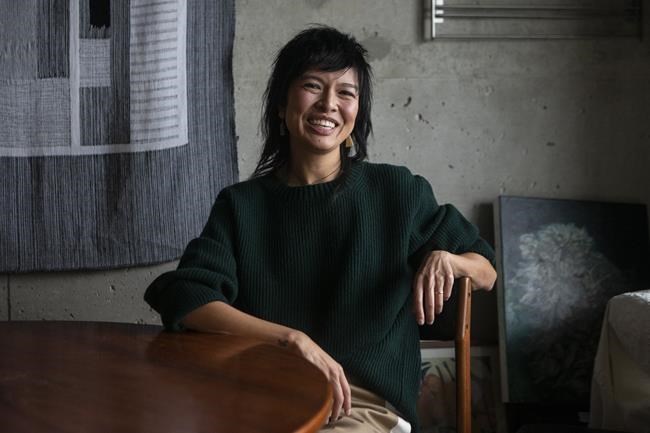TORONTO — When the COVID-19 pandemic sent droves of office workers home, it didn't take long for some to decide that their living rooms or spare bedrooms were in need of a makeover.
Many turned to a splash of paint or finally bought a desk, but Tammy Yiu Coyne also saw people yearning for something to hang on their walls.
The co-founder and chief executive of Toronto’s Partial had just the thing: an art rental service specializing in pieces that don’t have multi-million dollar price tags.
Her business — like several others aimed at letting people try before they buy — saw a pandemic boom that pushed up revenues and taught a whole new audience that art rentals aren’t just for the wealthy.
“Our favourite stories are people who've never bought art before, bought their first piece on Partial and then now are buying two or three pieces,” said Yiu Coyne.
Partial, which launched in 2016 with about 20 pieces and has since grown to several thousand, focuses on Canadian art that costs less than $5,000. It offers three-month painting, sculpture and photograph rentals for as little as $25 and as much as $1,300.
The pieces can be bought outright at any time and if you’ve already rented the piece, the fees you paid will be subtracted from the purchase price.
So many people were drawn to these offerings during the pandemic that Yiu Coyne said the number of rentals increased by 125 per cent between 2019 and 2020 and this year’s on track for a 43 per cent increase. About three quarters of the people who rent later buy the pieces.
Art Rentals and Sales, a non-profit program operated by the Vancouver Art Gallery and focused on B.C. artists, was similarly busy.
Zoe Mackoff de Miranda, the program’s manager, noticed companies that rent art returned it during the pandemic, but a wave of people who would typically spend money on travel or other pursuits gravitated towards her program for the first time.
Many told her they wanted to rent a piece to spice up their background for videoconferencing. She suspects some were also inspired by the recent movement encouraging people to support local business and she hopes that momentum will continue and take some of the fear factor out of art purchases.
“Sometimes people are really intimidated by going into larger galleries because they feel like they have to know something about art or that they'll get looked down on if they don't know certain artists or genres, but rental removes a lot of that,” she said.
Her program focuses on pieces, which can be purchased for up to $15,000, but their rentals range from $12 to $250 per month and can last as long as one desires. If you eventually decide to buy a piece, the program knocks the first three months of rental fees off the price.
For those considering their first rental, Mackoff de Miranda recommends focusing on pieces or styles you love and not worrying about commitments.
“Even if it's totally outside of what you thought you might be interested in, just try it,” she said.
“Maybe you'll fall in love with it even more or you'll get totally sick of it after a month and you can bring it back.”
Don’t be afraid to go big or bold, Yiu Coyne adds.
“A lot of new buyers think I’m going to start small and hang this tiny piece over my couch, but you definitely want to go bigger,” she said.
If you’re unsure where to start, she recommends Partial’s sommelier. A consultation is free and can provide a professional opinion on what pieces would best fit and accentuate any space. Customers also get access to augmented reality software letting them virtually place a piece in their home.
Once you’re settled on a piece, some programs like Mackoff de Miranda’s offer delivery and installation services — a good choice for those worried about art being damaged during transport.
Fretful renters can also look at whether their home content insurance will cover damage to the art once it has arrived, but Mackoff de Miranda said history bodes well for those without coverage.
“You'd be surprised how rare it is that damage happens,” she said. “People are generally pretty, pretty careful.”
Yiu Coyne agrees.
“In all the years that we've been around, we've only ever had one instance where something happened,” said Yiu Coyne.
“No one intentionally goes out of their way to damage art.”
This report by The Canadian Press was first published Nov. 18, 2021.
Tara Deschamps, The Canadian Press

